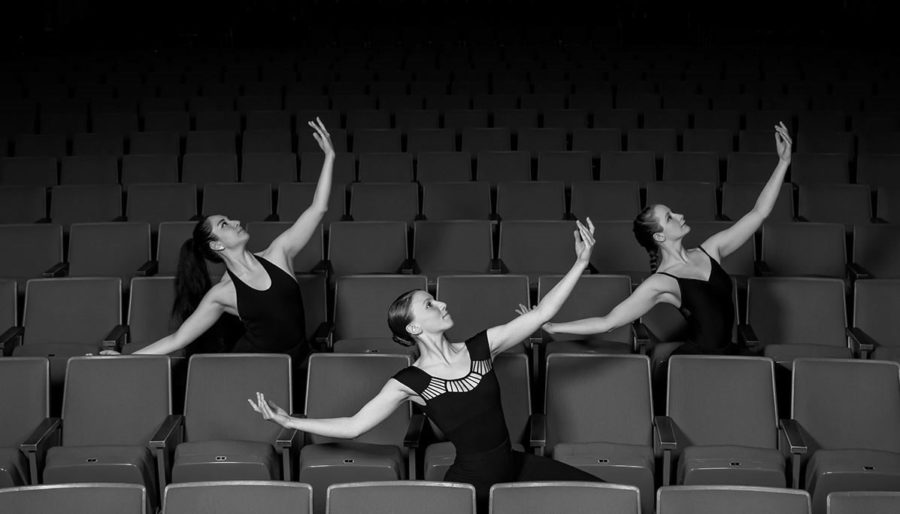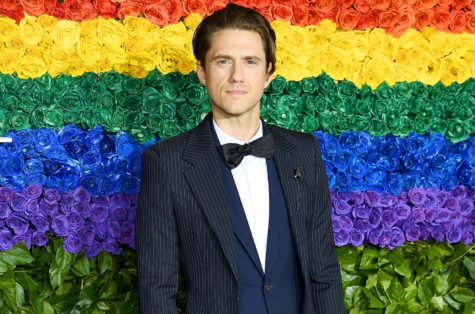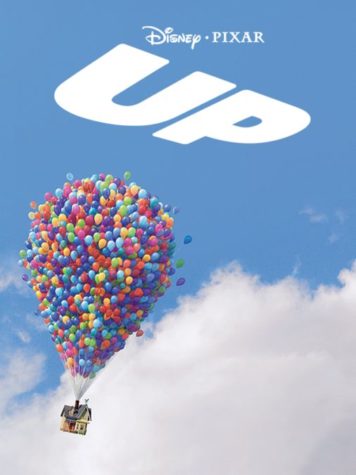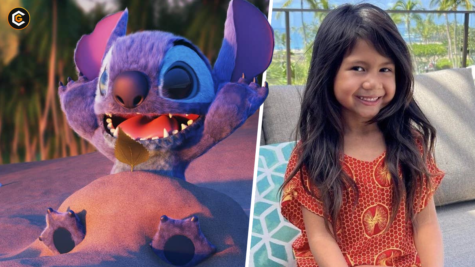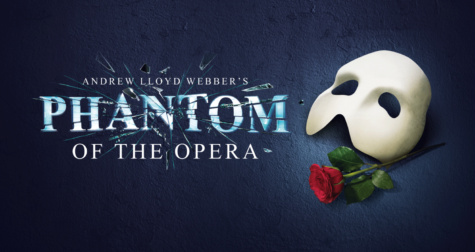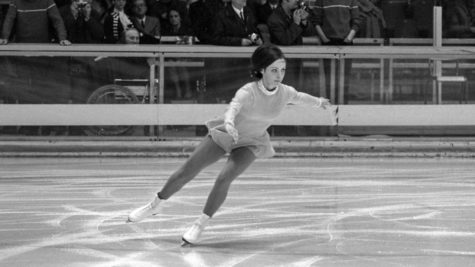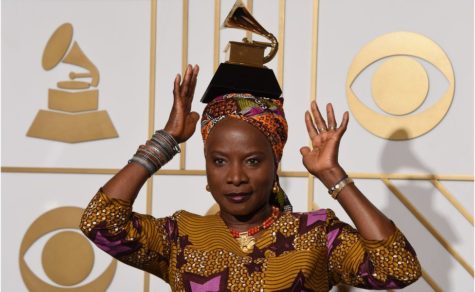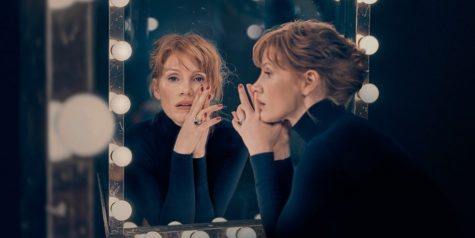Raw Edges showcases senior talent
May 4, 2022
Costuming, lighting, casting, choreography, beats, rhythm, movement and energy are only a couple of things on the senior dance majors’ minds for their Raw Edges pieces. Raw Edges is the senior capstone of the Dance Department. All the hard work the senior dancers put into their Mercyhurst career leads up to this. They must research their idea for their piece, cast dancers and put their work into motion, all in the spring term of their final year here at Mercyhurst.
This is the 24th showcase of Raw Edges, and each one is better than the last. Each piece is so unique and special that any could easily bring a tear the audience’s eyes and for all different reasons. Dance majors are taught throughout their years at Mercyhurst how to be good choreographers and go through many assignments and lessons to get to this point. This is now the time they really get to explore their own voice and soul through movement.
Not only must they do self-exploration, but then they must express their thoughts and feelings through their fellow dancers. The seniors must have faith in their cast to portray their vision. These are 8–10-minute pieces, so the seniors have a lot of music to fill. These are the longest pieces they have been asked to create in the Dance curriculum. Each student has their own story to tell.
Some derive from scientific research, others from personal pain and a few are just about having fun. All are special to the choreographer. They share their story and ideas with their dancers which can sometimes be very hard to do, especially if the dance is about personal struggles. Many of the dances this year come from pain. Chronic pain, illness, injury and loneliness are big themes that were clear to everyone in the audience this weekend. The pieces are incredibly moving, and one can feel the choreographer’s agony sitting in the red seats of the Performing Arts Center.
One piece that was particularly moving was by Emmaline Devore called “(ANTI)Social.” This piece was about social anxiety and what it is truly like to be confined to your own self-destructing bubble. It was so incredible to see a dis-order many people struggle with silently be put into motion on a big stage. The costuming of this piece was impeccable. It was simple, with a black unitard and each dancer wore a different colored blazer; this showed in the individualism that is plaguing our world today and how that only makes social anxiety worse. In the end, when we shed our different colors, we are all in the same boat.
Another piece that was beautifully personal was by Angela Lutz. Her piece was all about no pain/no gain, called “Do I Quietly Walk on this Path of Suffering.” The trauma that comes with injury is something that is so individual to each dancer. Not only is an activity and schooling ripped from the dancer, but also their art form. Imagine your form of self-expression being taken from you in one pivotal moment that you can not take back. The isolation of injury is some-thing that needs to be talked about more in the dance world. Proper physical healing is there, but the mental healing is silent and can go without notice. Angela did a fantastic job of painting a chronology of the highs, the injury and the healing process. The costuming and lighting were so well done as well. The dancers were fierce and emotional all while portraying a story so close to their choreographer.
However, other pieces are purely from curiosity and self-discovery. Many seniors do not want to take a personal route and that is perfectly fine. Some choose to explore a different side of dance they have not experienced in their time, or some choose to take a scientific route to forming the theme of their dance. Some researched different therapies, how the brain works and many other topics that many do not think about when it comes to putting a contemporary dance piece together.
One dance that really stuck out was by Sydney Gondringer. Her piece was titled “Painting the Brain.” Sydney said she researched how color can remind people of memories, make emotions appear and affect our overall lifestyle. Color theory is such an interesting topic to choose because it is all mental; no one can see it. However, using notes from research, making motions from this phenomenon is really quite incredible. This would be like trying to put love into motion. Gondringer did a fantastic job with her colors, lighting and choreography. Her music was a mix of disco-funk and contemporary which helped to bring out emotions of the audience as well.
As said, some dances are derived from learning a new type of dance in a self-taught way. The beginning of the show started with a flamenco piece choreographed by Jenna Fritz. The piece, called “Crimson” was fierce and bold. The girls wore black and carried traditional fans. Every movement was so sharp it could cut diamonds. The rich tones of the lighting and coloring were so seamlessly put together to create an experience as if one was truly watching a traditional Spanish women perform. Jenna was heavily inspired by her love of women in espionage, which is her choice of genre. It was incredible the detail she put into her dance and seeing how powerful the women felt on stage. It really was like watching a spy work.
Ramani Rosa was very open about his self-exploration inspired piece. His dance was straight out of RuPaul’s Drag Race. The piece was called “Club Confiteor” which translates to “Club Confession.” Ramani says this is a confession of his soul’s movements. He wanted to put all of himself into this piece with the costuming, lighting and movement. It is a fun, poppy piece that makes the audience’s inner partier come out. However, the ending is quite tragic. The dance ends with the dancers falling one by one until there is only one left. The piece is dedicated to the Pulse Night club shooting in Orlando, Florida, in 2016. Sadly, this was a mass shooting that ended with 49 people dead and 53 wounded. Rosa dedicates the piece to the victims of this horrific act and anyone who has ever felt hatred or intolerance.
Another fantastic piece was the finale of the whole show. This was one for the books. Maya Richards knows how to put on a show and she did just that. Maya is half Japanese, and her culture is extremely important to her. Her family is a part of a Japanese drumming group out of Cleveland, Ohio, which is where much of her love for music derives from. She decided that, for her senior thesis, she wanted her beautiful culture and family to be a part of her choreography. The drummers are a part of the dance, and the dancers work seamlessly with them. This was such an incredible dance that everyone said that was their favorite of the show. The musicians and dancers all looked so happy to bring Maya’s vision to life. Nothing is more important than sharing one’s culture with others. The choreography, lighting, costuming and drumming were so powerful and strong that the audience members felt like warriors enveloped in the piece.
Of course, there are many other senior choreographers in the showcase as well. Grace Sinke had two pieces in the program. One was her independent study about chronic pain and the spoon theory called “Beautiful Life.” This dance was agonizing and inspiring at the same time with dancers supporting each other through hardships. Her other was a piece called “Pomp and Sunscreen” dedicated to her last few weeks at Mercyhurst and the emotions one goes through when preparing for graduation. It was fun and inspirational with a twist of speech, which is not common in this showcase.
Taylor Lowe was another choreographer who decided to pursue a more theoretical route in her capstone by researching why people are drawn to explore. Why are humans always curious? Her piece, “Just Go,” was inspired by the wanderlust of humans and our instinct to seek out more, always more.
Libby Bullinger’s piece, called “Healing Bones, Fractured Minds,” was another about the effects of injury on a dancer’s life and mental health. The dancers were quick to understand Libby’s desire for raw emotion. She had the biggest cast of 14 people, which is undeniably hard to work with. Libby certainly took a leap with her piece in casting that many people; however, it was successful in the end.
Some pieces were even on the creepier side. Payton Carroll took a different approach than her fellow students by creating a feeling of eeriness and desolation. Her piece, “_topia,” was about the dystopian society that many authors love to imagine. Her movements were all sharp and the dancers hardly made an expression, which made the piece even more hair-raising.
Finally, MJ White choreographed a piece that was incredibly moving. Her dancers moved so fluidly and seamlessly. Each time she watched her piece, “Compatior, Compati, Compassio”, MJ cried. It was so personal to her, and one could clearly see the emotion and time she put into her piece. Her piece was about having compassion for others and never knowing what another human is going through. We have each other on this earth to help one another, but we still cannot seem to understand this. The show was so incredible, and one could clearly see the intense emotion, hard work and chal-lenges these choreographers and dancers went through to get to this point.
Congratulations to all the people who were part of making this show possible. Every single person was important, and the show wouldn’t run like a well-oiled machine if it was not for every single individual. These seniors should be so proud of their work and will go on to do incredible things beyond graduation.

